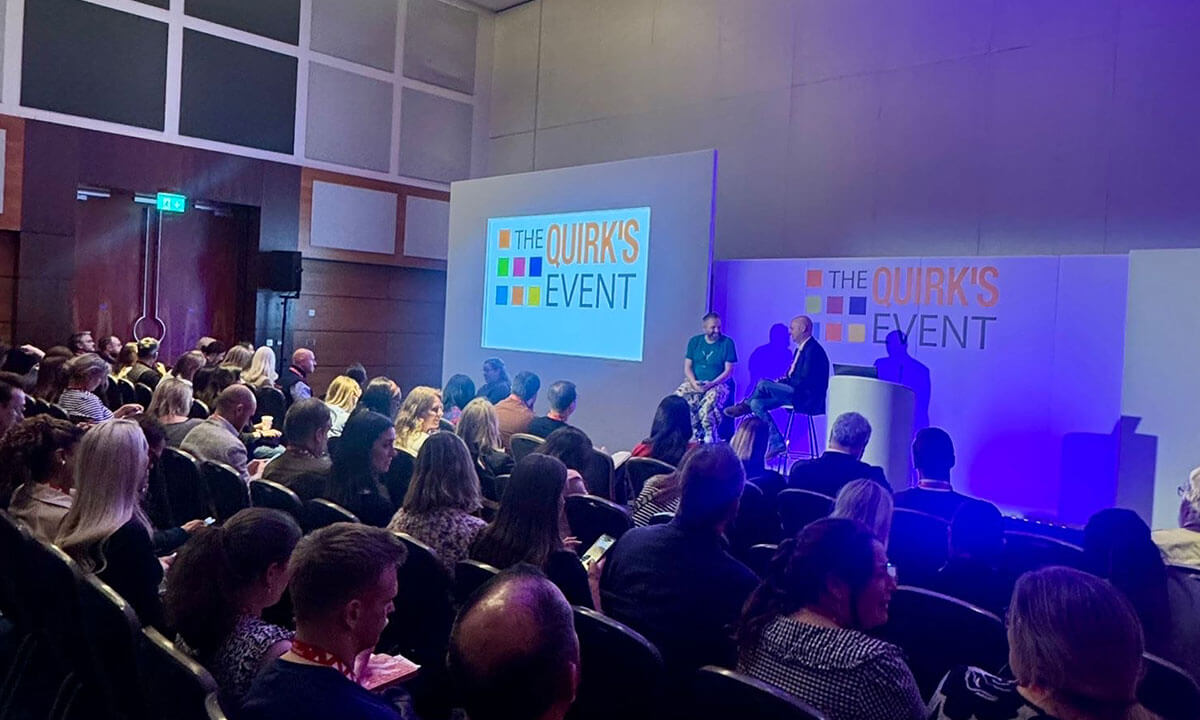Introduction
In a market research ecosystem, data quality is paramount. Fraud proves a significant challenge for market research and insights professionals who are increasingly reliant on quality data to drive decision-making.
Fraud can take several forms, from lone perpetrators to organized fraud networks who have the capability to devise and deploy highly sophisticated technologies that allow them to emulate real people and real devices.
That’s an issue for everyone. In fact, in a survey conducted by Cint in late-2024, 81% of our customers stated that fraud is their current number one challenge. Fraud also accounts for being the number one priority to combat in 2025 and beyond for 62% of those customers, underscoring the urgent need for strong protective measures across the industry.
As the data quality landscape evolves, Cint is focused on collaborating with industry minds to identify and implement solutions, and improve knowledge on how best to tackle fraud throughout the workflow.
Common problems, Cint solutions
Fraudsters use various methods to infiltrate surveys for nefarious means.
This section delves into three of the most prevalent quality issues in market research —click farms, ghost completes, and artificial intelligence (AI) —highlighting how each undermines data integrity, before offering strategies to detect and prevent them.
Ghost Completes
A “ghost complete” refers to a survey response that appears to be complete to a supplier, but in reality, the buyer does not see the respondent as entering and/or completing the survey. For researchers, ghost completes lead to suppliers pausing sample to their projects when they perceive them to be full. Costs are inflated for both buyers and suppliers who need to repeat surveys and claw back paid-out incentives. Wasting time, money, and trust.
Ghost completes are the most solvable issue in the market research industry. If survey redirects were secured, fraudsters would not have the opportunity to manipulate them. Cint addresses this issue by building its server-to-server (S2S) solutions to secure redirect links using APIs, which eliminates link manipulation between Cint’s platform and a buyer’s platform. S2S ensures higher data quality and reduces the risks of redirect fraud for all parties.
Click Farms
Click farms—high-stakes operations where individuals fraudulently complete surveys in bulk to claim rewards—pose another threat to data integrity in the research industry. These attacks typically involve high volumes of fraudulent completes being generated by humans. These attacks can involve anything from large teams of hired individuals operating in a room to individuals operating on multiple devices simultaneously. The advancement of technology means click farms can use a blend of humans alongside scripts, bots & AI.
The speed and scale of click farms make them difficult to detect in real time. The increasingly sophisticated nature of technology is making it more challenging for buyers and suppliers to separate fraudulent responses from genuine ones. As a result, organizations may be unaware of the extent of the fraud until significant damage is done, which leads to compromised insights and wasted resources.
To combat this, Cint employs its proprietary Trust Score model, which uses AI and machine learning to proactively detect and prevent fraud. By analyzing behaviors across billions of transactions, Cint flags suspicious activity at the respondent level. This approach is strengthened through our partnership with third-party security vendors for advanced bot detection tools, strategic pre-screening methods, including VPN detection and fraud scoring designed to expose inconsistencies and filter out fraudulent participants before they impact survey results.
Artificial Intelligence
Whilst Artificial Intelligence (AI) creates opportunities for innovation & advancement worldwide in numerous fields, from medicine to teaching, it is also creating opportunities for fraudulent communities to improve their attack methodologies. It raises ethical dilemmas for researchers as to whether AI usage by genuine respondents, such as using it to support in formulating responses based on their opinions, is ever acceptable.
Authentic human respondents are essential to generating trustworthy market research insights. To ensure data integrity, Cint focuses on verifying every respondent, alongside partnering with suppliers to build high-quality, fraud-resistant respondent communities. “Our mission is to continually reduce invalid completes and deliver the highest-quality sample,” says Philipp Rosenbeck, Cint’s Senior Director of Product. Check out Fighting bots with bots: how to combat AI-driven fraud for insights into how Cint is addressing the rising threats associated with AI.
Working together to eliminate fraud
Quality is a shared responsibility amongst all parties involved in the market research process. Fraudulent activity is constantly evolving, with fraudsters looking for the weakest link to intercept responses. Working together and ensuring everyone plays their part in protecting the research process is key to fighting fraud and improving data quality.
Quality is a shared responsibility amongst all parties involved in the market research process.

Quality for buyers
Quality and its implications are equally important to suppliers. At Cint, we’re regularly asked about recommendations for suppliers. Here are some areas you can explore to keep bad quality at bay:
- Lock Down Redirects: As a buyer, you have the power to eradicate ghost completes by fully securing your redirects. Utilize Cint’s Server-to-server (S2S) to protect your projects from the implications of ghost completes.
- Build a good experience: Put yourself in the shoes of a respondent by testing your own surveys before launch. Be mindful of the respondent experience as it improves data quality: think short surveys (less than 14 mins) and appropriate targeting.
- In-field checks: Deploying checks to terminate undesirable panelists can save you time when cleaning data. For example, if you’re using multiple vendors, try to make sure you have a deduplication tool in place or include trap questions to identify inattentive panelists. If you know that failure of a question or check in a survey will result in rejection of survey data then terminate the respondent. This deters fraudsters as they never get an incentive, which is also a better experience for suppliers and buyers who can more accurately assess how much good sample is needed.
- Reconcile quickly: share the reasons for rejecting data (for example, this could be down to copy pastes or bots) as soon as possible so bad actors can be identified and addressed with suppliers before additional damage is done.
Quality for suppliers
Quality and its implications are equally important to suppliers. At Cint, we’re regularly asked about recommendations for suppliers. Here are some areas you can explore to keep bad quality at bay:
- Mitigate link manipulation: Link manipulation is the most preventable type of fraud behaviour our industry faces. Ensure every link your panelists are exposed to that you — as a supplier— have control over is secured. For example, use hashing and HTTPS on links and monitor for potential link tampering.
- Vet panelists: Thorough vetting of panelists at the recruitment stage and screening before sending them to a survey can reduce losses further down the line. To this end, we recommend suppliers keep solid records of panelist performance including terminations, reversals, and profiling changes in order to monitor abnormalities and flags that indicate fraudulent behavior.
- Monitor sub-sources: Vet them before onboarding and keep a close eye on their performance (e.g. reversal rates, high drops, low conversion) so you can address any problems sooner rather than later. Monitoring your panel performance allows you to improve and maintain panel hygiene through the consistent removal of bad actors.
- Secure respondent workflow: Generally try to secure every part of the respondent workflow that you touch through operational and technological measures you can help deter fraud.
Whether you are a buyer, a supplier, or both, there is no one size fits all approach. Take the time to try different options and find what works best for you.

It’s clear that ensuring the integrity of the sample workflow involves multiple stakeholders across the entire ecosystem.
Conclusion
With fraud continuing to evolve in both scale and sophistication, it’s clear that ensuring the integrity of the sample workflow involves multiple stakeholders across the entire ecosystem.
At Cint, we’re committed to staying ahead of the curve by developing advanced fraud prevention tools, fostering transparent partnerships, and sharing insights that help both buyers and suppliers safeguard their data.
To read more about Cint’s ongoing commitment to quality, head here.



































































































